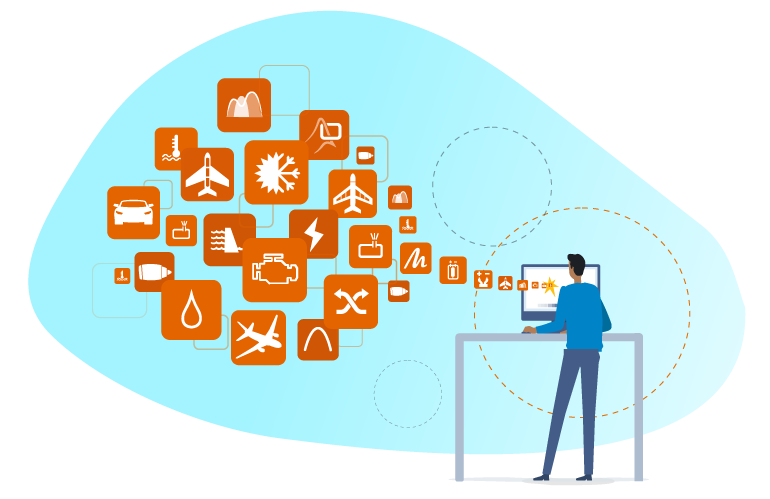Modelon Library Suite
A comprehensive suite of Modelica libraries expertly designed for your physical system modeling needs.
Home » Modelon Library Suite
A comprehensive suite of Modelica libraries expertly designed for your physical system modeling needs.

The Modelon Library Suite consists of 17 expertly designed Modelica-based libraries covering a wide range of industries, domains, and applications. Each library is carefully developed by a team of modeling experts with deep domain knowledge in modeling, simulation, and optimization. The Modelon Library Suite is available in Modelon Impact and for integration into third-party platforms
Modelon’s libraries contain example models for common applications which can be copied and customized within a user’s workspace.
Modelon’s libraries are validated through close partnerships with our customers.
Our libraries are designed so users can easily execute multi-domain modeling on a system or sub-system level.
Built on the open-standard Modelica language, users can view and build source code as well as import in-house or 3rd party compliant components.
Equipped with refrigeration cycle templates and components
Suitable for designing fixed-wing aircraft and their sub-systems
Suitable for a wide variety of electrification applications
Ideal for investment planning and operation of hybrid energy systems
Developed for analysis of aircraft environmental control systems
Ideal for research, design, and configuring fuel cell systems
Capable of verifying fuel systems on civil and military aircraft
Provides geometry-based heat exchangers, focused on compact designs
Suitable for industries that develop hydraulic components
Ideal for model-based design of integrated aircraft systems
Includes components with geometry-based resistance correlations
Ideal for analyzing power generation plant performance and limitations during transient scenarios
Capable of designing vapor cycle systems for heating, cooling, & waste-heat recovery
Developed for full vehicle and vehicle sub-system analysis
Modelon’s libraries contain many more components than competing libraries. These components are meaningfully different, and allow for modeling at different levels of abstraction, making them the best libraries we could find on the market”
Kruno Hrvatinić
Head of Control and Simulation at Rimac Technology.

The largest benefit of building the model with a dependable library of components was being able to help our engineers think. Our team could more clearly see how a system architecture was laid out and where changes would need to be made.
Peter Gotenstam
Manager of Vehicle SystemsConcept Design, Modeling, and Simulation, Saab Aeronautics.

At Hanon Systems, we sought to better predict the performance of our air conditioning systems before prototyping. Modelon stood out with its reliable simulation capabilities, offering comprehensive component libraries like the Air Conditioning Library, Liquid Cooling Library, and Heat Exchanger Library that helped us understand and analyze the behavior of our systems.
Jun Young Choi
CAE Engineer, Hanon Systems

You’ve got ambitious projects that need the right expertise. We’ve got the experience to steer you in the right direction. From our world-class modeling experts to instructor-led and self-guided training, we’re here to guide you to success.
Always at hand to help our customers be at their most productive.
Deep industry knowledge and specialization to help with the most niche applications.
Get in touch with us today to see how Modelon’s libraries handle complex modeling and return accurate results.